Modern Audi vehicles are usually fully loaded with amenities: Heated seats, power adjustable everything, Bluetooth connectivity, parking systems, multi-function stereo units… the list goes on. This means that a lot of electrical consumers must work in unison to properly function. This can put quite a load on the vehicle’s electrical system, which at times can struggle to keep up with the demand.
Ask almost any automotive technician what their least favorite repair job is, and electrical diagnosis will be the likely reply. Modern Audi electrical systems can seem overwhelming at times when diagnosing issues. But as complicated as a newer Audi vehicle can be, these cars still rely on basic electrical systems to complete their tasks. Always start with the basic steps when diagnosing electrical issues.
Without a strong battery in your Audi, you are not going anywhere. A dead or weak battery can cause a lot of issues! If a vehicle is constantly driven very short distances or parked for extended amounts of time, this can also wreak havoc on a battery. Audi batteries are generally located in the right rear of the vehicle for weight balance and packaging considerations. Load testing a suspected weak battery quickly lets you know if it needs replacement. Prior to load testing a suspected weak battery, it’s wise to charge it for a short time, then remove the surface charge. This can be done by leaving the vehicle headlights on for a minute or two before testing.
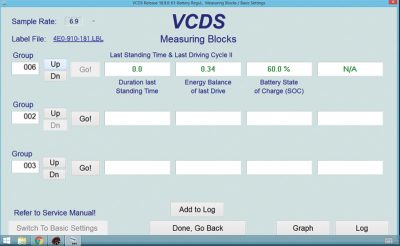
It’s necessary to code in battery replacement on Audi models with energy management systems. Most European manufacturers follow this same protocol. The energy management system needs to know the strength of the battery being used in the vehicle. Failure to code battery replacement can lead to overcharging issues, which can greatly reduce battery life, and can cause a host of other electrical problems from over-voltage. It’s only possible to code OEM batteries. The BEM (Battery Energy Management) code on the battery is the information you need.
On all newer Audi models, the battery energy management system is integrated into the negative cable at the battery ground. This system is critical in monitoring battery health as well as charging status and electrical consumers. The battery energy management system communicates via CAN to vehicle systems and can even shut down electrical consumers to save engine-starting ability.
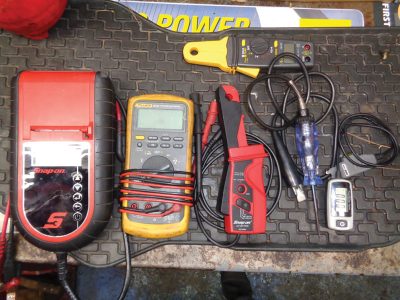
If you suspect issues with the battery or charging system, this control unit can be interrogated and will store faults to aid in diagnosis of issues. This is primarily helpful in chasing down battery drain issues.
Factory level scan equipment is a necessity to communicate with the battery management system. By entering address 61 – Battery Regulation on most models, it is possible to view live battery data as well as retrieve any faults that may be stored. Coding for battery replacement is also available in this control unit.
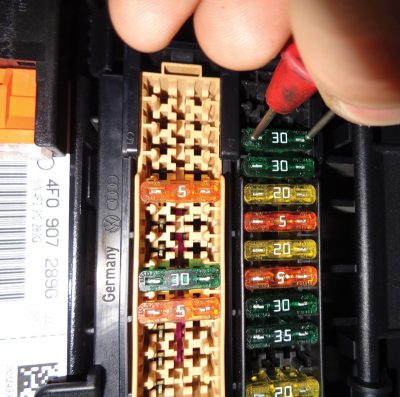
An accepted electrical draw on a modern Audi is usually considered to be 3-40 milliamps. This is with all electrical consumers in sleep mode as well as all doors, hood, and trunk shut. During diagnosis, it is usually still necessary to access the inside of the vehicle for diagnosis. This is due to Audi placing interior fuse panels at the A-pillar location as well as in the trunk. Usually it’s only necessary to set the door, trunk, and hood latches with a screwdriver. Keep in mind, if the vehicle has an interior motion sensor, you may have to disable it during diagnosis to avoid setting off the alarm system. Switch location varies by model but is generally on the driver’s door or B pillar.
It’s important to keep in mind these vehicles can take longer than you may expect to fully shut down and go to sleep. On basic models such as the A4, which has fewer convenience features, full sleep mode usually only takes 5–10 minutes. On fully loaded models, this process can take up to 45 minutes to fully go to sleep.
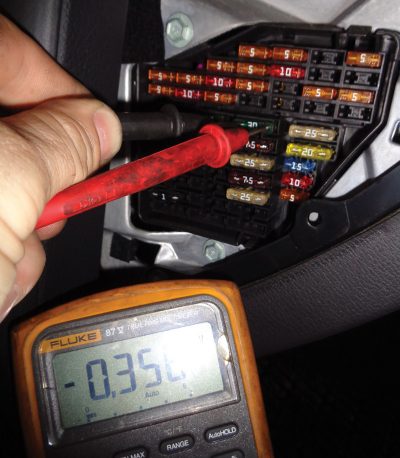
When diagnosing electrical draws, it pays to have patience. You cannot rush the vehicle to sleep and may misdiagnose a phantom draw if you’re not careful. The best tool available to measure current draw is an amp clamp, or clamp meter. These low-current meters are perfect for measuring overall electrical draw. Just make sure the jaws are wide enough to fully close over the cable you are testing. Failure to completely cover the battery cable can result in inaccurate readings.
When checking for excessive current draw, always back probe fuses if possible. The exposed tangs at the back of the fuses are perfect for connecting multimeter probes for testing. Removing a fuse for a suspected circuit will disrupt power supply, which often resets the affected accessory and may mask the real issue. Only pull fuses and disconnect the vehicle battery as a last resort for draw testing!
There are certain cases in which a battery reset can actually bring unresponsive control units back to life and fix sporadic issues. To complete a battery reset, first disconnect both positive and negative leads from the battery. Use a jumper wire to connect the positive and negative leads together safely away from the battery. Do not go near the battery terminals at all while performing a reset. This allows the control units in the vehicle to completely drain any stored electrical current and clear adaptations and memory. It can take up to 45 minutes to complete a full battery reset.
Download PDF
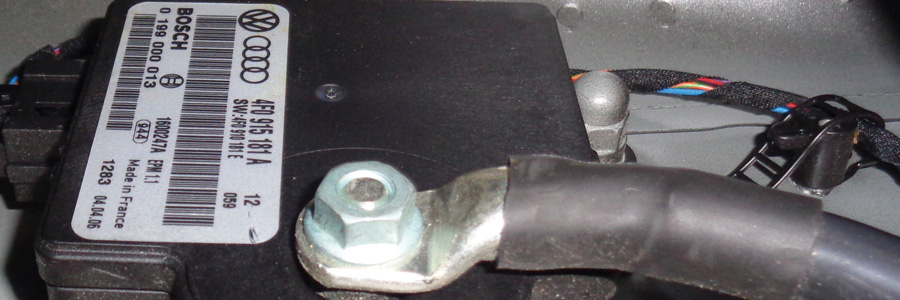

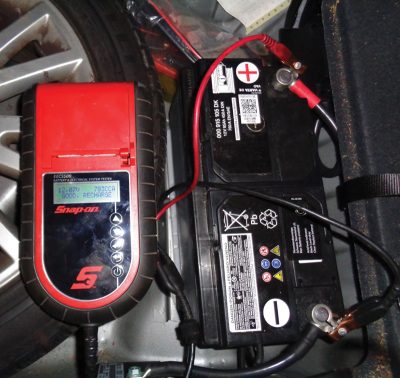
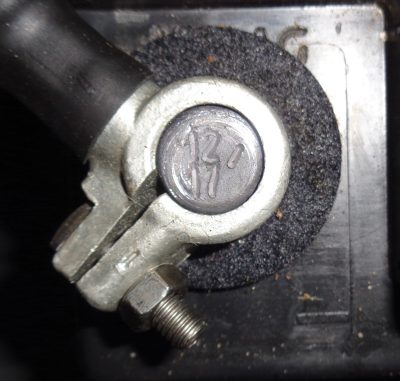
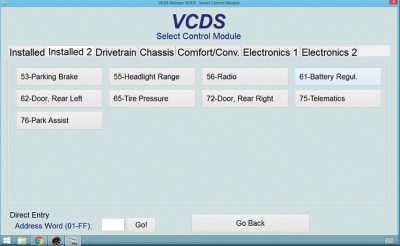
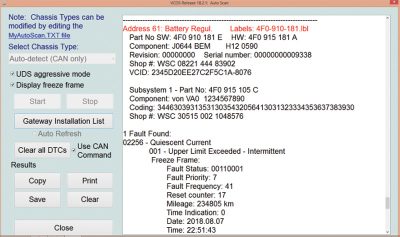



0 Comments